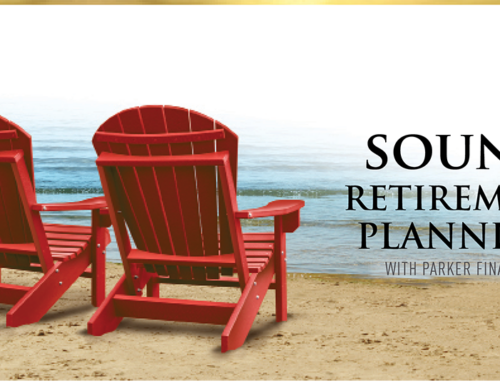In the world of retirement planning you would be amazed how many people make a cut before measuring. When preparing for retirement the very first step should be to create a retirement plan not an investment strategy.
We are in the process of remodeling our kitchen. My wife has been working hard, and she is doing an amazing job lining up the right contractors, getting multiple bids, picking out all of the colors and designing an amazing space.
One of her best decisions so far was to hire Kristy Ludwig (Kristy Ludwig Kitchen & Bath Co.) to help with kitchen & cabinet design. Kristy has years of experience and her family owns a cabinet making company (Markay Cabinets, Inc.) so she is very knowledgeable in both materials, design and function. Before the cabinets were constructed, Kristi met with my wife several times to go over specifics and details. They spent several hours together designing a beautiful kitchen that would utilize and maximize our space.
When I was a boy working on a home project with my Dad, he once told me to “measure twice and cut once.” I agree with him that it is better to take your time upfront and do the job right the first time around than to hurry and possibly make mistakes wasting materials. He said, “Jason once you make the cut you can’t take it back.” One of the things I noticed about working with Mrs. Ludwig is that she measured multiple times before sending the final plans to the cabinet makers for production. Her diligence gave us a tremendous amount of confidence in her work.
Can you imagine if our kitchen/cabinet designer did not take the time to make proper plans? What would have happened if we walked into her office and she designed our new kitchen without ever measuring our home or asking us what we wanted? Wouldn’t that seem crazy? How much confidence would we have in the final outcome?
I’ve learned from working with hundreds of retirees that retirement is all about cash flow. Your income is what will determine your lifestyle in retirement not your net worth. You need to begin your retirement journey by understanding how much money you spend every month and then looking at how much income you have coming from guaranteed sources such as social security and pensions. You’ll also need to consider the impact inflation will have on your plan over time. In addition, married couples need to consider what cash flow will look like if one person dies and how a significant health care event might impact their financial well being.
If you are like most people we meet with, then chances are pretty good the reason you have saved money over the years is to help supplement your income needs in retirement. You likely want to travel, spend time with those you love, doing what you love, and you want to avoid ever becoming a burden to your family either physically or financially.
Too many people today are creating an investment strategy and diversification strategy before they create a retirement plan. How could you create a plan for investing your life savings without understanding the impact of the overall plan.
A good retirement plan should be your foundation for making financial decisions. A comprehensive plan will provide you with strategies for maximizing your social security income. It should compare your guaranteed cash flow versus your budget and identify any income gaps. A well-developed retirement plan can help you understand the minimum rate of return you need to earn to make the numbers work and help you craft a strategy for dealing with the health care risks you might experience. Finally, it should take into consideration the volatility of the stock market. Once all of those fundamental components have been explored, then you have the data you need to create a retirement income plan, diversification strategy and investment strategy.
In a recent interview on CNBC, Robert Schiller, who won the nobel prize in economics in 2013 and is considered one of the 100 most influential economists in the world, said that in some markets housing, stocks and bonds all seem expensive. He said, “The whole thing might correct down both bonds and stocks.” In a recent interview in This Is Money, Mr. Schiller said the current CAPE is 26.3 (compared to the average of 15.21 for the 20th century according to Wikepedia). He went on to say there have only been three major occasions since 1881 where the CAPE was higher. The years were 1929 which was followed by the great depression, 2000 which we now call the tech bubble, and 2007 commonly called the financial crisis or great recession. Mr. Schiller is well known for the CAPE ratio (Cyclically Adjusted Price to Earnings) which helps investors understand if equity markets (S&P 500) are a bargain or expensive by dividing price by the average 10 years of earnings adjusted for inflation. A high CAPE value would indicate stocks are expensive and a low number indicates stocks are a bargain.
This information is not to scare you. Instead I hope to empower and encourage you to stress test your portfolio. If we were to experience a market crash how would that impact your retirement plan? Do you have a retirement plan? This is especially important if you or someone you know is getting ready to retire. Please join with me and share this information with the people you care about. Ten thousand people a day are retiring in our Country and from my experience most people have an investment strategy but few have a retirement plan. Hoping for the best is not a plan. This may seem like common sense advice, but from what I’ve experienced this is not common practice. It does not need to be complicated. Just remember “Measure twice, cut once”.
This article was also featured in the October 2014 Kitsap Peninsula Business Journal.
•••••••••••••••••••••••••••••••••••••••••••••••••••••••••••••••••••••••






